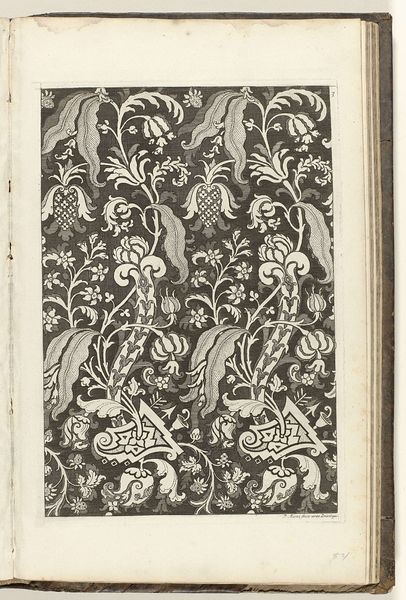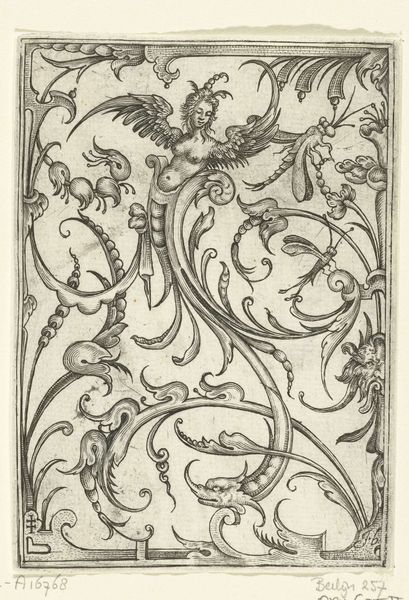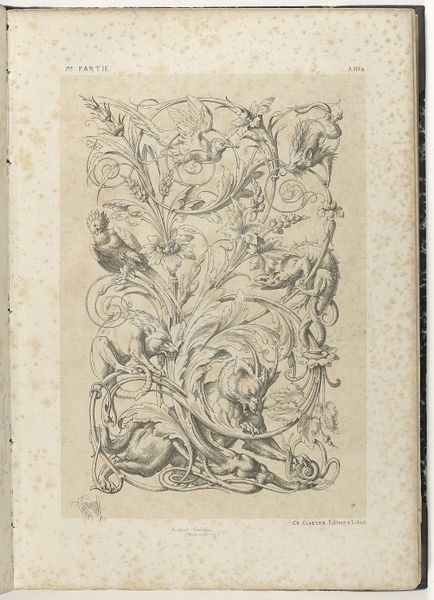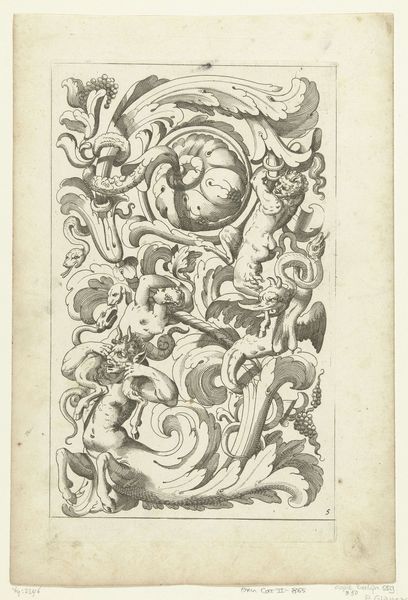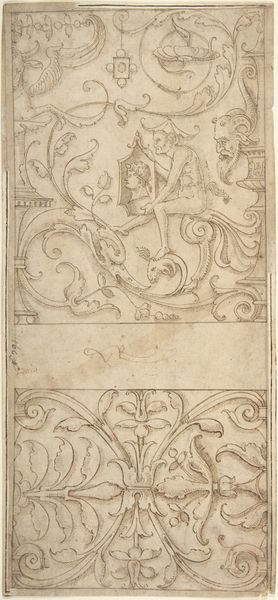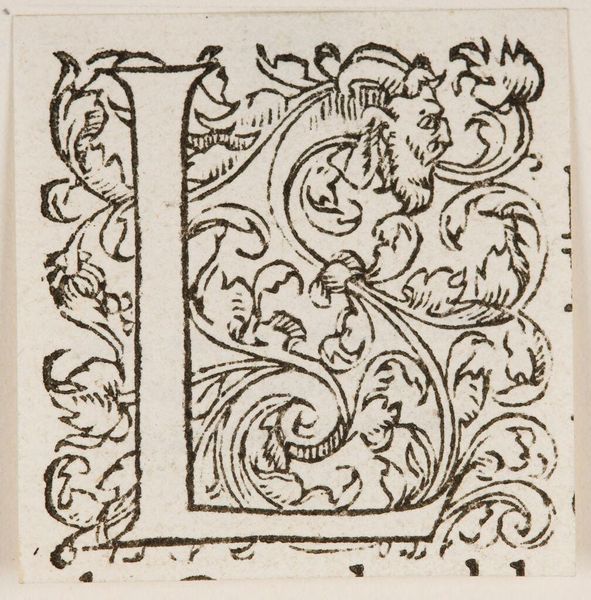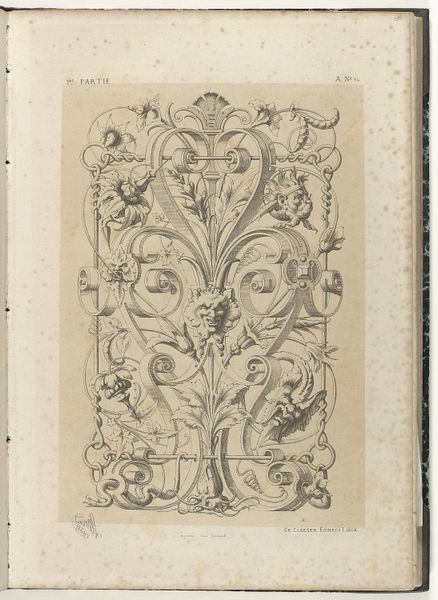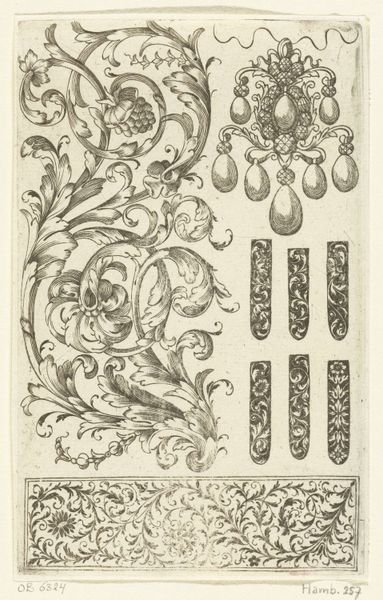
drawing, print, etching, engraving
#
drawing
# print
#
etching
#
figuration
#
11_renaissance
#
line
#
northern-renaissance
#
engraving
Dimensions: 168 × 142 mm (sheet); 170 × 150 (binding closed)
Copyright: Public Domain
Curator: We’re looking at Lucas Kilian's "Alphabet," created around 1627. It's an engraving, so a print made by incising lines into a metal plate. The Art Institute of Chicago holds this impression. What’s your first take? Editor: There is something quite aggressive in its composition! Despite the ornate embellishments and detailed line work, my attention is instantly drawn to a depiction of children. Curator: Specifically, one child seems to be receiving a spanking, while another practices the very letters forming the composition. The use of figuration does speak volumes about the culture of that period, doesn’t it? Editor: Absolutely. Notice how the large letter form provides both physical and conceptual framework. The elaborate swirls almost entrap these tiny figures within the learning process. It looks far from a gentle encouragement; I imagine these children being put into labor as makers of signs themselves, of the literal word! Curator: Exactly. Consider the implications of this "Alphabet" print—an artisanal production aimed at disseminating and celebrating literate culture among a rising literate and moneyed class in the cities. The choice of materials, the painstaking technique of engraving...these all speak to labor and consumption intertwined. Editor: The act of one child whipping the other could also carry psychological implications related to the pain often connected with childhood education and instruction. The imagery is more complex than simple decoration. And even this letter 'W' itself takes on an imposing authority within that framework. It is both an image, and an element for creating all other images through the labor and practice of learning to read and write! Curator: An interesting observation. So we are faced here with the cultural memory and emotional investment projected on these images through pedagogical practice. We see an explicit relation between artistic processes of creation, their social use, and the production of labor. I believe our viewers now have greater food for thought regarding this historical 'W'. Editor: It provides rich cultural insights that resonate even today. I am left pondering the deeper meanings embedded within, like the relationship of learning to bodily pain and fear... Curator: It encourages me to reconsider how craft practices in art intersect and shape education and our society more broadly. Thank you!
Comments
No comments
Be the first to comment and join the conversation on the ultimate creative platform.

